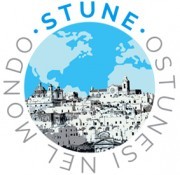The town walls

The imposing and well-preserved town walls, remodelled over the centuries, are the same ones that have protected Ostuni since the Middle Ages, when our ancestors had to face the assaults of external enemies.
The first wall, whose huge blocks can be seen towards the Rosara district and in the area adjacent to the vegetable gardens, was built at the time of the Messapi, who left indelible traces of their civilisation and culture in the upper and lower Salento.
The second wall was built in the 11th century A.D. by the Byzantine emperor Basil the Macedonian and, after becoming almost crumbling due to the neglect and laziness of the administrators, it was restored and strengthened by the Swabian emperor Frederick II.
The third wall is the imposing and discreetly preserved one, which can be admired from the beginning of Porta Nova to the foundations of the ancient Palazzo Scalona.
The first wall as we see it today, was built from 1350 to 1356 by the Angevins, who occupied our lands, to defend the city from the assaults of the Teutonic Companies, the Agareni, the Saracens and the pirates coming from the other side of the Adriatic.
In 1480, when the massacre of Otranto took place, the Aragonese had towers and bastions erected to defend them from the Turks, who sailed along the coast to seize the Adriatic ports.
Around 1500 the wall had to be restored and rebuilt, and Queen Bona Sforza, feudal lord of Ostuni, allowed the construction of civil dwellings, for which she assigned the fee to the Benedictine nuns.
Both the present wall, bastions and towers, as well as other defence structures, have no embrasures or battlements, which means that boiling oil, pitch and even more stones were sufficient to repel enemy assaults from both sea and land since the early centuries.
Finally, in August 1995, the restoration and consolidation of the walls and towers began, as they were cracked, eroded and, above all, lacked static strength and required intervention.

